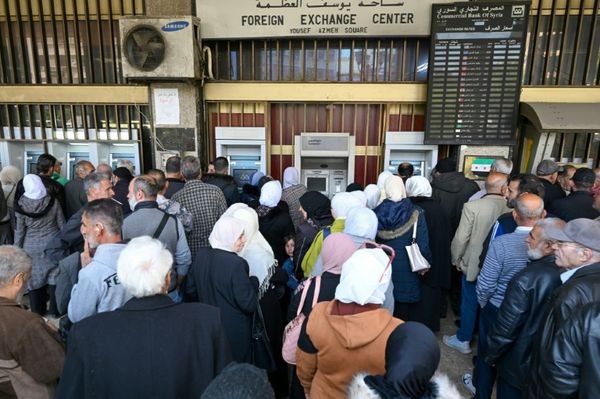The first air crash of 2025 involving a passenger jet has taken place in Washington DC. An American Airlines regional jet carrying 64 people was on the approach to Ronald Reagan National Airport when it collided in mid-air with an Army Black Hawk helicopter on Wednesday evening. Both aircraft crashed into the Potomac River.
All 67 people on board both aircraft are feared dead. The National Transportation Safety Board posted on X (formerly Twitter): “NTSB has launched a go-team to the aviation accident involving a PSA Airlines Bombardier CRJ700 airplane and a Sikorsky H-60 military helicopter near Ronald Reagan Washington National Airport.”
All flights in and out of Reagan National have been paused until at least 11am on Thursday.
What is the airport situation in Washington DC?
Most international flights to the US capital arrive at Dulles airport, 20 miles west of the city centre. Other flights from abroad touch down at Baltimore Washington, 30 miles north east.
Ronald Reagan National airport is most unusual. It opened in 1941 very close to the centre of Washington – the northern perimeter is just three miles south of the White House. Being so close, the airport is popular with many travellers: the management says: “Our Runway 01/19 is the busiest in the country.”
In normal operations, the airport handles up to 60 flights per hour. The stipulation is that “mainline” airlines have a maximum of 37 flights; commuter jets, 11; private aircraft 12.
The airport says: “All aircraft movements are solely controlled through the FAA National Airspace System, including the design and implementation of flight procedures and corridors.”
As a result of the proximity to the heart of government, air-traffic control is taken extremely seriously. After the 9/11 terrorist attacks in 2001 – which included a plane being flown into the Pentagon – the airport was closed for 23 days.
What do we know about the aircraft involved?
It was a CRJ-701ER commuter jet operated by PSA Airlines. The type has not been involved in any previous fatal accidents.
PSA is a subsidiary of American Airlines which operates smaller aircraft on regional flights – a standard arrangement among big US carriers.
The aircraft was 20 years old and fitted with 65 seats. It normally carries two pilots and two cabin crew, which was the case with flight AA5342.
Before the crash, the plane had operated a typical busy schedule on Wednesday: flying in from Greenville-Spartanburg in the morning, making a round-trip to Cleveland and another flight to Wichita.
How common are mid-air collisions?
Thankfully, they are extremely rare. On average there has been one per year so far this century, most of them involving small private aircraft and/or helicopters.
All pilots and air-traffic controllers are focused on avoiding other “traffic” in the skies. All large passenger aircraft are equipped with a traffic collision avoidance system, known as TCAS. If a potential threat is identified, the system will issue a “resolution advisory”. Typically one aircraft will be instructed to climb and the other told to descend. Pilots are required to perform the manoeuvre specified by the resolution advisory even if it conflicts with instructions from air-traffic controllers.
The Washington tragedy involved a military helicopter, which has very different operational characteristics from a fixed-wing aircraft. It is not known if it was fitted with TCAS, but in any case the system is inhibited when aircraft are very close to the ground.
What will investigators be examining?
National Transportation Safety Board investigators will be studying in immense detail the sequence of events that led up to the tragedy.
In many accidents, a sequence of unlikely and unexpected events combine to cause a crash.
There has been much speculation, including from President Trump, about the possible causes. Much of this is unhelpful and distressing.
An American helicopter instructor and former CRJ pilot, Philip Greenspun, has posted some thoughts about what might have gone wrong.
He writes: “A review of the ATC [air-traffic control] recording shows that there was plenty of room for human error.”
Dr Greenspun suggests that the Black Hawk pilots may have said that they could see the approaching aircraft while actually looking at a different plane.
“The most plausible explanation is that the Black Hawk crew and DCA Tower were talking about two different airliners (ie, talking past each other),” he writes.
“There were some excellent humans with excellent training in the airliner, in the Tower, and in the Black Hawk. Everyone was operating in the most restrictive low-altitude airspace (Class B) that we have in the US and under time-tested rules that have ensured safety despite congestion.
“At the same time, however, we have the limitations of a natural language (English) and the human brain, which may latch onto and commit to the first plausible airliner that it sees.”
During the current closure of Reagan National airport, what is happening to flights?
The Federal Aviation Administration (FAA) issued a notice reading: “The Ronald Reagan Washington National Airport (DCA) was closed as of 29 January at 9pm EST. The date/time when the airport is expected to reopen is 30 January at 11pm.”
After the accident, dozens of flights diverted to airports including Washington Dulles, Baltimore Washington, Philadelphia, Charlotte, Richmond and Pittsburgh.
Planned arrivals from New York La Guardia, Chicago O’Hare and Miami returned to their starting points.
Flights due to operate to and from the airport on Thursday morning are mainly cancelled or rescheduled to depart after 11am.
Is flying getting more dangerous?
With three fatal events involving passenger jets in five weeks, it is understandable that some people will conclude that risks are increasing.
In fact, this decade is so far much safer than any previous spell. The three crashes have had entirely different causes, all of which are extremely rare:
Lessons will be learnt from all of these tragedies and will contribute to future air safety.
The UK and Ireland have the best air-safety records in the world. The last fatal accident involving a British passenger jet was in the 1980s – the Kegworth disaster.
The safest airline worldwide by passengers flown without a fatal accident is Ryanair, with easyJet in second place.







